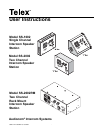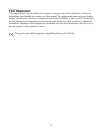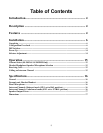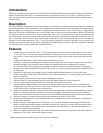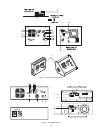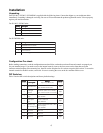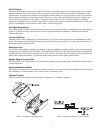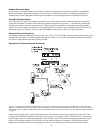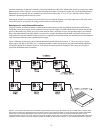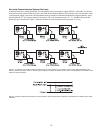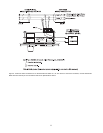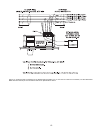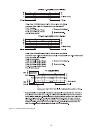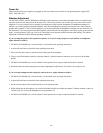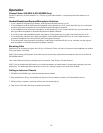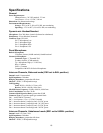4
Introduction
Thank you for purchasing the Audiocom SS-1002/SS-2002/SS-2002RM Intercom Speaker Station. We hope the many design
features of this product will satisfy your intercommunication requirements for many years to come. To get the most out of
your new intercom station, please take a few moments to look through this booklet before using the Intercom Speaker Station
for the first time.
Description
The Intercom Speaker Stations may be used with a headset, or with the built-in speaker and the panel microphone or an optional
gooseneck microphone. Another alternative is to use headphones and either the built-in panel microphone or an optional goose-
neck microphone. As an alternative to a headset, a telephone style handset may also be used. The SS-1002 is a single-channel
station; the SS-2002 & SS-2002RM provide switch selectable access to either of two intercom channels. Both the SS-1002 and
SS-2002 come in three versions to suit a variety of applications. The “S” box is a portable version. It has a carrying handle and
dual “loop-through” intercom connectors which permit stations to be quickly interconnected using prefabricated cables. The “P”
box is a stationary version. It also has dual “loop-through” connectors for quick interconnection, but the case is designed for
desktop or console-mount applications. The “U” box is designed for permanent, in-the-wall mounting. It uses push type wire
terminals for connection to the intercom system. In addition, the SS-2002RM can be used on a desktop or mounted in a standard
19” equipment rack (using the optional RM-14 Rack Mount Kit).
Features
1. Channel and Power connections: The “U” box uses quick release terminals to connect audio and power wires. For the
“S” box and “P” box versions, the terminal connections are brought out to the dual, loop-thru XLR connectors on the
side of the box. These permit several stations to be connected in a string, or daisy-chain, using prefabricated intercom
cables.
2. Configuration DIP switches: These switches control the following features:
Call Beep: In addition to a flashing call key indication for incoming calls, an incoming call beep tone can also be used.
Headset Microphone Type Selection: Either a balanced or unbalanced dynamic microphone can be selected.
DC call enable: This may be turned on to use the intercom station with intercom systems that use DC call signaling.
3. Panel Mic Key: Selects the Panel Mic connector / Built-in Mic (11) in the on position and the headset connector (10) in
the off position.
4. Speaker Key: Selects the built-in speaker in the on position and the Headset connector (10) in the off position.
5. Channel Select Key (SS-2002 & SS-2002RM only): Selects intercom channel 1 or 2. The key lights green for channel 1
and red for channel 2.
6. Volume Control: Adjusts intercom listen volume to headphones or speaker.
7. Intercom Listen Key: Both momentary (push-to-listen) and latching (hands-free listen) are possible.
8. Call Key: Used to send call signals on the intercom channel. Flashes for incoming calls.
9. Intercom Talk Key: Both momentary (push-to-talk) and latching (hands-free talk) are possible. All models are also
equipped with a “mic kill receive” circuit, which allows an operator at a remote master station (such as the US-2000A)
to turn off the talk key on all stations on the intercom line.
10. Dynamic-Mic Headset Connector: 4-pin male XLR connector accepts headsets with monaural headphones and either a
balanced or unbalanced dynamic microphone. Also accepts a telephone style handset. Can also be used with head-
phones when a Panel Mic is connected. Can also be used with a handheld microphone along with the internal speaker.
11. Panel Mic Connector: Accepts an electret gooseneck microphone such as the Telex MCP-90.
12. Built-in Panel Microphone: Active when the Panel Mic key is pressed and a gooseneck microphone is not inserted in
the Panel Mic connector.
13. Sidetone Trimmers: These adjust the level of the user’s own voice in the headphones when using full-cushion head-
phones. (Eliminates the muffled sensation when talking with the ears completely covered.) When using the speaker or
open-ear style headphones, the sidetone trimmers are adjusted to eliminate the user’s voice from the headphones or
speaker. This helps to prevent feedback.
14. Balanced / Unbalanced Selector Switch: This switch sets the intercom station for compatibility with either Audiocom
(balanced) or Clear-Com* (unbalanced) intercom systems.
* Brand names mentioned are the property of their respective companies.



